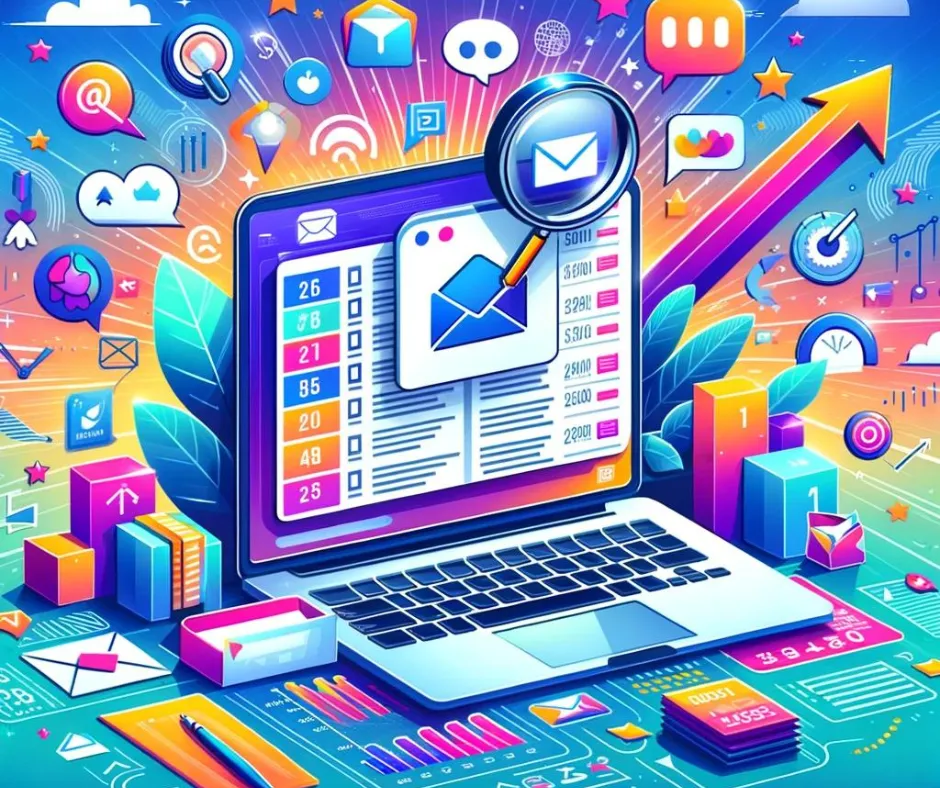

Contact US
Thank you for considering Konig Digital for your digital marketing needs. We are here to answer any questions you may have and help you get started on your journey towards achieving your online goals.
70% of customers prefer to message with businesses
- The Washington Post
You can contact us through any of the following methods:
Email: [email protected]
Phone/Text: +1 (240) 202-2609
Address: 7903 Cole Ave, Takoma Park, MD 20912, United States
Alternatively, you can fill out the contact form and one of our representatives will get back to you as soon as possible:
We look forward to hearing from you and helping you achieve success online.
Transform Your Business with Smart Marketing Automation Software...

Email Marketing Mastery: Boost Your Local Business Revenue with These Proven Tips
Email Marketing Mastery: Boost Your Local Business Revenue with These Proven Tips
Introduction to Email Marketing
Email marketing remains an unparalleled tool for local businesses aiming to boost revenue and foster customer relationships.
In an era where digital presence dictates market visibility, mastering email marketing offers a direct line to your audience, promising personalized engagement and measurable results.
Understanding Your Audience
Identifying Your Target Audience
The foundation of a successful email marketing campaign lies in knowing who you're talking to. This starts with detailed customer profiles that highlight demographic, psychographic, and behavioristic characteristics.
By understanding your audience's needs and preferences, you tailor messages that resonate deeply, ensuring higher engagement rates.
Segmenting Your Email List
Not all customers are the same; hence, a one-size-fits-all email won't cut it.
Segmentation involves dividing your email list into smaller, more focused groups based on specific criteria, such as purchase history or engagement level.
This personalized approach significantly boosts the relevance and effectiveness of your campaigns.
Crafting Compelling Email Content
Writing Engaging Subject Lines
Your subject line is your first, and sometimes only, chance to grab the reader's attention. Crafting subject lines that provoke curiosity or offer value can dramatically improve your email open rates.
Remember, clarity and relevance are your allies here.
Personalizing Your Emails
Personalization goes beyond addressing the recipient by name. It encompasses tailoring the content based on the recipient's previous interactions with your business, their preferences, and their stage in the customer journey. Such personal touches make the recipient feel valued and more likely to engage.
Creating Valuable Content
The core of your email should provide value that educates, entertains, or solves a problem for your audience.
Whether it's exclusive offers, insightful tips, or compelling stories, the content should always aim to foster a stronger connection with your brand.
Email Design Best Practices
Responsive Email Design
With the majority of emails now opened on mobile devices, ensuring your email design is responsive is non-negotiable.
A mobile-friendly design guarantees that your message is conveyed effectively, regardless of the device used.
Visual Elements in Emails
Incorporating visuals can enhance your message's appeal, but it's crucial to balance them with text. High-quality images, videos, and strategic calls-to-action (CTAs) can significantly improve engagement and conversion rates.
Timing and Frequency
Discovering the optimal timing and frequency for your emails can be a game-changer. While too many emails can annoy subscribers, too few can make them forget about you.
The key is to find a balance that keeps your audience engaged without overwhelming them.
Testing and Optimization
A/B Testing Your Emails
A/B testing, or split testing, involves comparing two versions of your email to see which performs better. By testing elements like subject lines, email content, or send times, you can continuously refine your strategy for better results.
Analyzing Email Metrics
Understanding your email campaign's performance requires a close look at metrics such as open rates, click-through rates, and conversion rates. These insights allow you to adjust your strategy and improve future campaigns.
Leveraging Automation
Email automation can take your marketing strategy to the next level. From welcome emails to follow-up sequences, automation ensures timely and relevant communication with your audience, increasing efficiency and personalization.
Staying Compliant with Regulations
Adhering to email marketing regulations, such as GDPR in Europe and CAN-SPAM in the U.S., is crucial. These laws protect consumers' privacy and ensure that businesses maintain transparent and ethical email practices.
Case Studies and Success Stories
Learning from others can provide valuable insights. Examining case studies of successful email marketing campaigns reveals strategies that have worked well in various industries, offering inspiration and practical tips for your own campaigns.
Conclusion
Email marketing, with its direct approach and personalized engagement, offers local businesses a powerful tool to increase revenue and strengthen customer relationships.
By understanding your audience, crafting compelling content, and utilizing best practices in design and delivery, you can create email marketing campaigns that resonate with your audience and drive results.
FAQs
1) How often should I send marketing emails? The frequency of your marketing emails should balance between maintaining engagement and avoiding spamming your subscribers. It largely depends on your industry, content type, and audience preferences.
A good starting point is once a week, adjusting based on subscriber feedback and engagement metrics. Regular testing and surveying can help pinpoint the ideal frequency for your audience.
2) What is the best day and time to send emails? While various studies suggest different optimal times, the truth is, the best day and time can vary significantly based on your specific audience.
Generally, mid-week days like Tuesday through Thursday, either early in the morning or post-lunch, have shown higher engagement rates. However, conducting A/B tests on different days and times can help you identify the most effective schedule for your subscribers.
3) How can I grow my email list? Growing your email list requires offering value and making it easy for people to subscribe. Include sign-up forms on your website, social media profiles, and at the point of sale or service.
Offer incentives like discounts, freebies, or valuable content in exchange for signing up. Ensure your sign-up process is straightforward and communicates the benefits of joining your list.
4) What should I do if my open rates are low? Low open rates can be improved by revisiting your subject lines, sending times, and subscriber list health. Ensure your subject lines are compelling and relevant.
Experiment with different sending times. Clean your list regularly by removing inactive subscribers and ensuring you have permission to email your contacts. Segmenting your list and personalizing emails can also significantly boost open rates.
5) How important is mobile optimization for email marketing? With over half of all emails being opened on mobile devices, mobile optimization is crucial. Emails not optimized for mobile may render poorly, leading to low engagement and high unsubscribe rates.
Ensure your email design is responsive, with easily clickable links and readable text on small screens. Test your emails on various devices and email clients to ensure a seamless mobile experience.
6) What are some effective ways to segment my email list?
Example: Imagine a local bookstore that has a diverse clientele. They could segment their email list in several ways:
Demographics: Separate emails for college students offering textbooks and study guides, and another segment for retirees interested in leisure reading clubs.
Behavior: For customers who frequently purchase mystery novels, the bookstore could send emails about new arrivals in the mystery genre or author signing events.
Purchase History: Customers who have previously attended a writing workshop could receive emails about upcoming workshops, while those who buy children's books might get emails about storytelling sessions.
7) Can I use purchased email lists?
Using purchased email lists is highly discouraged as it violates the principles of permission-based marketing and can lead to high spam complaints, low engagement, and potential legal issues.
Building your own list through ethical practices ensures higher quality subscribers genuinely interested in your brand.
8) How do I measure the success of my email marketing campaigns?
Example: A small online clothing retailer launches an email campaign to promote their new summer collection. They set clear objectives like increasing website traffic and sales of the summer collection by 15%.
They track open rates to see how many subscribers are interested in their summer collection based on the subject line.
Click-through rates (CTR) help them understand which items in the email intrigued the subscribers enough to visit their website.
They use conversion rates to measure how many of the clicks resulted in purchases of their summer collection.
To understand the effectiveness of their targeting, they also monitor bounce rates and list growth rate to ensure their emails reach the intended audience and attract new subscribers.
9) What’s the best way to personalize emails?
Example: A fitness app that offers various workout plans might collect data on how their users interact with their app. Based on this data:
For users who predominantly engage with yoga content, the app sends personalized emails featuring new yoga challenges, mindfulness tips, and exclusive videos from popular yoga instructors.
If a user recently started a weight-loss program within the app, they could receive emails with motivational stories from other users who achieved their weight-loss goals, along with healthy recipes and workout tips to keep them engaged.
10) How can I ensure my emails don’t end up in the spam folder?
Example: A new online gourmet coffee shop is preparing to send its first email newsletter. To ensure their email reaches their customers' inboxes, they:
Craft a subject line that clearly indicates the email's content, such as "Discover Our Rare Coffee Blends This Month!" avoiding overly salesy phrases like "Buy Now!" or "Exclusive Deal!"
Before sending out the newsletter, they ask new subscribers to add their email address to their contacts during the sign-up process, improving their chances of landing in the inbox.
They also maintain regular engagement with their list by sending out emails at a consistent frequency and encourage feedback by asking subscribers to reply with their coffee preferences or questions, which can help improve their sender reputation with email service providers.
To find out how we can help your business win with email marketing click here to book a no obligation call...
Konig Digital, LLC
Address: 7903 Cole Ave, Takoma Park, MD 20912, United States
Email: [email protected]
Phone No: +1 (240) 202-2609
Hours:
Weekdays – 8 AM to 5 PM
Weekends- OFF

2025 All rights Reserved | Sitemap







